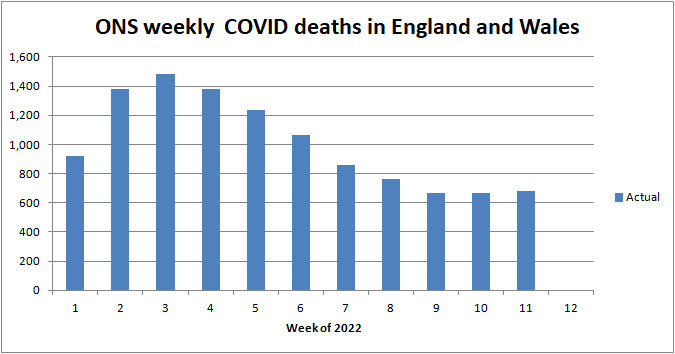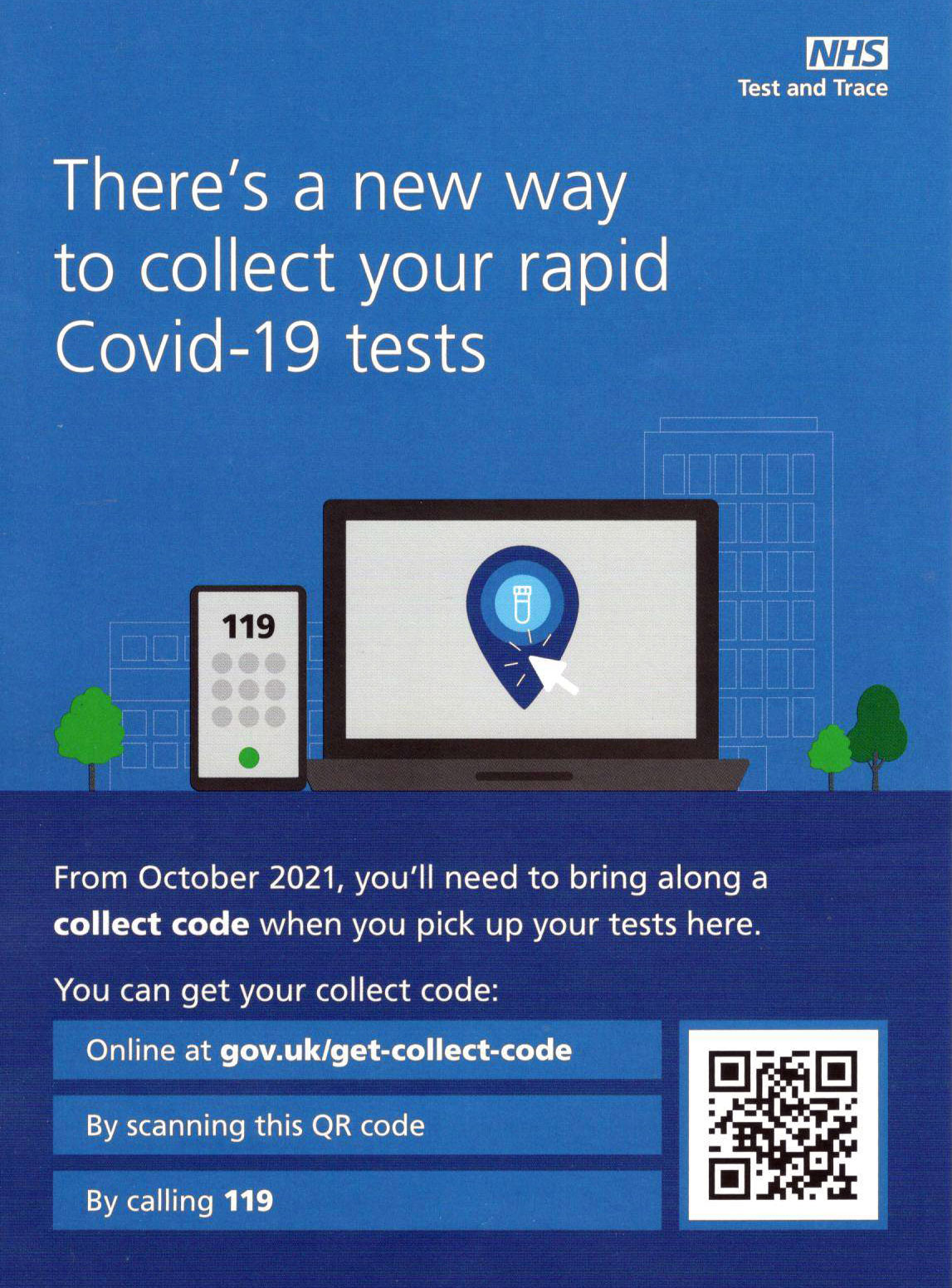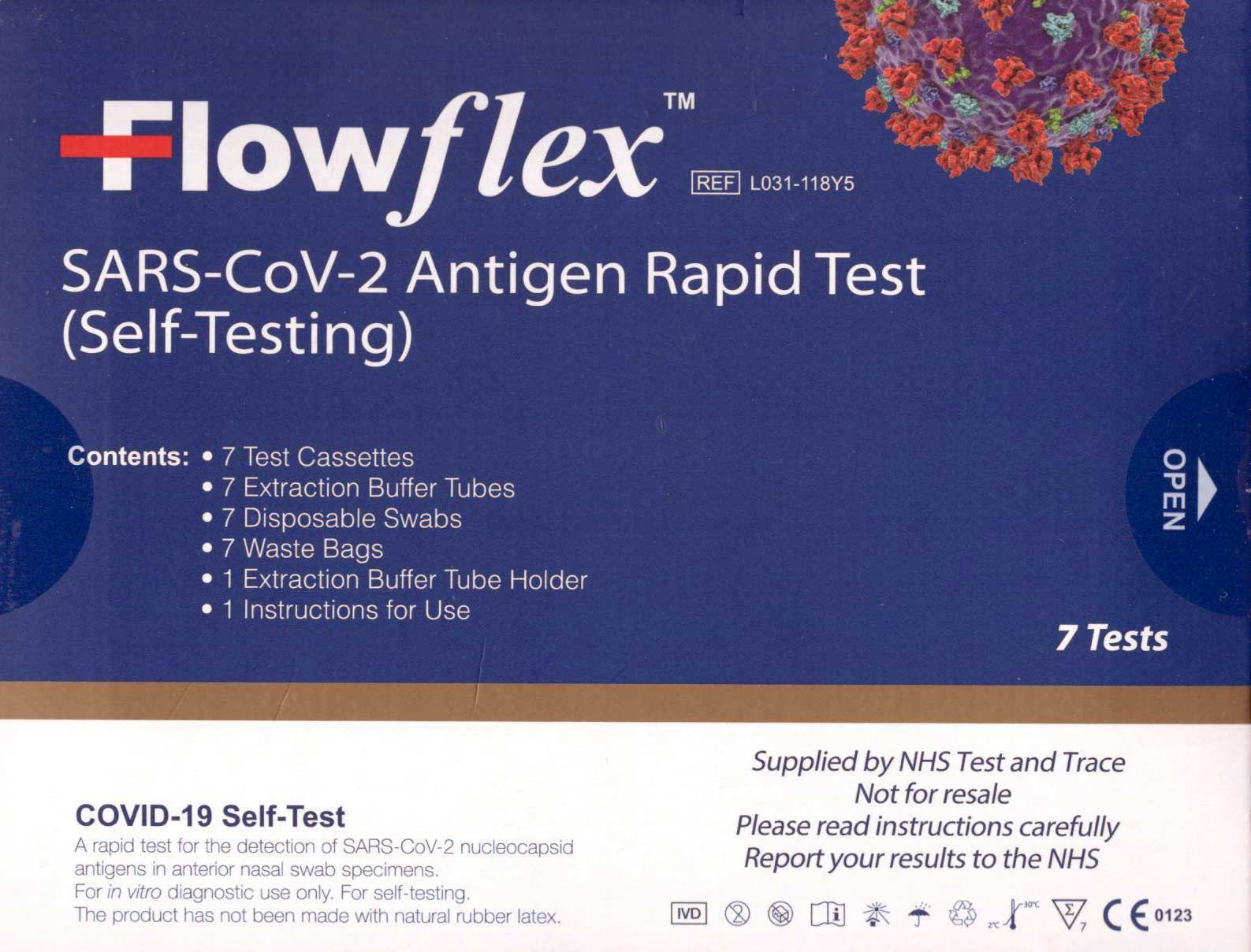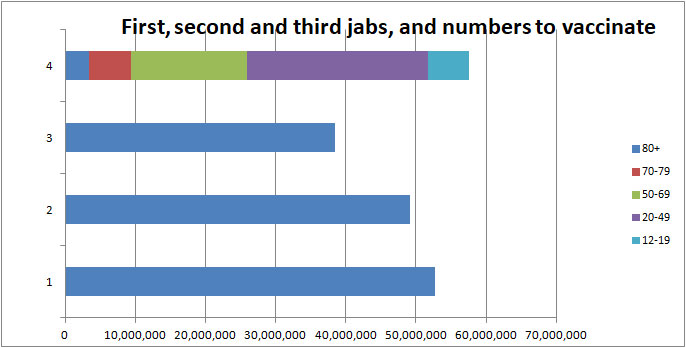
Angus and Rosemary's Miscellany
of Malvern - Other Resources
|
Coronavirus (COVID-19) epidemic weekly update for Malvern SeniorsClick to read our observations on politics and world events 3rd April 2022
PreambleOver the last two years we have been keeping an eye on the published government figures and monitoring the media to asses the likely level of risk for Seniors in the Malvern Hills district and providing links to where further information could be found. Now the worst of the epidemic is over the numbers are of far less importance, but we'll carry on with our blog for a while. Testing is being run down and the public is increasingly not recording the result of Lateral Flow tests so the daily cases reported on the Coronavirus Dashboard grossly underestimate the true situation. Roughly half the deaths reported by PHE are thought be elderly patients who die with COVID but not from it. The best sources of data are currently:
Note: the future of Zoe is uncertain as UKHSA plans to stop funding at the end of March and for most people there will be no more free Lateral Flow Tests from 1st April 2022. For the time being this page will continue to be updated each weekend using Friday's data. ContentsFurther information: About the Zoe COVID symptom study About the NHS contact tracing app SummaryThe COVID pandemic has been, and continues to be, a roller coaster ride. New daily cases are at their highest ever level; COVID bed occupancy went up 15% in England last week, and in consequence COVID deaths can be expected to rise a little during April. Nevertheless for the majority in England who have been fully vaccinated life has returned to normal. COVID hospital Intensive Care Unit (ICU) beds are said to be mostly occupied by those who are not fully vaccinated so make sure to get your booster jab if you have not already done so. While the highly infectious Omicron BA.2 virus remains prevalent it is very likely many of us will catch COVID-19 in coming weeks. It may make us feel very poorly and send us to bed for a few days; and it could take ten days or so to recover. But except for the very frail elderly and 'clinically vulnerable' we are unlikely to be hospitalised and the good news is our resistance to future infection should be greatly increased whether or not we have a second booster jab. Many people who have caught COVID report feeling tired for several weeks afterwards so don't overdo things and allow time to recover your strength. To counter vaccine waning amongst the most vulnerable, a second COVID-19 booster jab is available to Seniors aged 75+ years known as the Spring Booster. Click for information about the Spring Booster Lateral Flow Device kits which only require a nose swab can be used to test for COVID at home. However be aware they are not 100% reliable and you may well be infecting others before there is enough virus for the test to show positive. If you are feeling poorly and test negative consider testing again two or three days later if symptoms persist. Note: the government discontinued supply of free Lateral Flow Tests to the general public on 1st April 2022. You can of course buy Lateral Flow Tests and some groups may still be eligible for free tests - click the link below to find out who: Government sets out next steps for living with COVID A local summary of COVID data can be found on the Worcestershire Coronavirus Dashboard. Deaths are on page 7, and hospital beds on page 9. Note: use the arrow <> buttons at the bottom of the Dashboard screen to move between pages. Click for Worcestershire County Council COVID-19 news Click for Simple Summary of Malvern numbers on the Coronavirus dashboard Click for the latest UK Government Coronavirus advice There is a colourful new webpage offering advice on learning to live with COVID for those aged under 30 years. Click for The Worcestershire 'Rona' Hub Rona is apparently young person speak for Coronavirus. How to get vaccinatedBy now we expect most Seniors are triple vaccinated. Children aged 5 - 11 years can be offered the vaccine but the value is debatable. Children's vaccine should be available in England from 4th April 2022 as two jabs, at a third of the adult dose. All those aged 16+ years can book a booster 3 months after their second dose. Click NHS link - Who can get a coronavirus (COVID-19) vaccine For information about walk-in centres in Worcestershire go to the website: and click the Vaccine Rollout tab at the top of the page. Click for information about vaccination at the Three Counties Showground Otherwise either see the NHS website for walk-in opening times and vaccine availability: Or click this link for more information and to book a vaccination on-line: Book a Coronavirus vaccination - NHS (www.nhs.uk) Or talk to your GP. More about vaccinationsVaccinometerOur bar chart below shows the total number of:
Vaccinometer as of 11th March 2022 People are still coming forward to be vaccinated, but the rate is so slow expect to see little change to this chart during 2022. Vaccination statistics can be found on the Vaccination tab of the Coronavirus Dashboard. First booster jabsThe government says everyone aged 18+ years has been offered a booster jab. To date just over 49M have had two doses, and nearly 39M booster doses have been administered, suggesting 10M still to boost in the UK; but those under 16 years are not yet eligible so there are probably 6M or so still to get their booster. A booster is essential for protection from the Omicron variants and hospitalisation. Spring booster jabs for SeniorsThose aged 75+ are eligible for a second (Spring) booster which ideally should be 6 months after the first booster. For the youngest in that age group that may be in a couple of months time. If you have had COVID after 1st February 2022, you should consider whether or not you need a second booster; and should you decide to go ahead, you must wait at least 28 days after infection before getting the jab. You will be contacted by the NHS and invited to book your spring booster when it's due. You may be offered appointment dates from 3 months after your last dose of the COVID-19 vaccine. But try to book an appointment around 6 months after your last dose to get the best protection from your Spring Booster. New Court Surgery is currently not offering Spring Boosters so you may have to book your booster at a mass vaccination centre, either on-line or by phoning 119. Click to book a Coronavirus vaccination - NHS (www.nhs.uk) Protection against hospitalisationThe UKHSA COVID-19 vaccine surveillance reports indicate the likely effectiveness of the vaccines. To quote:
Click for UKHSA COVID-19 vaccine surveillance report Week 11, 17th March 2022 Effectiveness against mortalityThe protection offered by the vaccines against death is less clear to us, but our reading of the report is that if you are taken into hospital and have had only 2 jabs there is roughly a 50% chance you might die compared to the unvaccinated. However after a Booster the risk is reduced to about 1 in 8 after 2 or 3 months.
Vaccinations WorldwideA chart of the worldwide vaccination situation can be found on the Our World in Data website. Click for worldwide statistics Hint: click the country list on the left hand side of the screen to add or remove countries from the chart.
|
| Date published | Prevalence (England) | Ratio of people with COVID |
| 25th March 2022 | 3,485,700 | 1:16 |
| 1st April 2022 | 4,122,700 | 1:13 |
Prevalence of COVID-19 in England estimated by ONS
In England, there has been an estimated 18% rise in prevalence in the last week.
Zoe COVID Symptom study
The ZOE COVID Symptom Study predicts 4,498,791 people have symptomatic COVID in the UK and estimates 340,589 new cases per day compared to 343,527 last week.
| Prevalence (UK) | Estimated new cases per day | |
| Last week | 3,860,690 | 343,527 |
| This week | 4,498,791 | 340,589 |
Prevalence of COVID-19 in UK estimated by Zoe COVID Symptom Study
According to Zoe prevalence in the UK has risen by 16% but the number of new daily cases has remained about the same.
Numbers testing COVID positive in Worcestershire (PHE)
The breakdown of those testing COVID positive by Worcestershire Lower Tier Local Authorities (LTLA) is shown in the following table, together with comparisons for Herefordshire, a more sparsely populated county, and the city of Leicester.
Note: the cumulative cases are copied from the 'Cases by area' (whole pandemic) data set of the Coronavirus Dashboard. The weekly increase is the difference between this week and last week's total.
| Districts of Worcs | Number testing positive | Weekly increase | Population |
| Bromsgrove | 32,281 | +825 | 98,529 |
| Malvern Hills | 19,079 | +724 | 77,545 |
| Redditch | 27,991 | +673 | 85,317 |
| Worcester | 31,972 | +885 | 103,542 |
| Wychavon | 36,641 | +1,209 | 126,240 |
| Wyre Forest | 29,522 | +767 | 100,957 |
| TOTAL | 177,306 | +5,083 | 592,130 |
| COMPARE WITH | |||
| County of Hereford | 49,769 | +1,804 | 195,000 |
| Leicester (city of) | 117,467 | +1,578 | 400,000 |
Cumulative cases reported by PHE in Worcestershire to 1st April 2022
Note: the weekly increase is indicative; the seven day average by area, which varies day to day, is an alternative metric that can be found on the Coronavirus dashboard.
Daily cases in Worcestershire remain high, but are a little lower than last week.
Actual infections could be four times the number testing COVID positive.
Cases in Malvern Hills by age group
The case rate is 945 in the 60+ group and rising, and 1,098 cases per 100,000 per week in the under 60 group and falling.
Click for cases by specimen date age demographics in the Malvern Hills
Interactive maps
At the bottom of the Coronavirus Dashboard (daily update) page there is an Interactive Map of cases which is coloured to show daily rates across the country. Cases remain high across most of England and Scotland
Click for Interactive Map of COVID cases
Note: the Interactive Map works on desktop PCs but it's possible you may encounter difficulties using a tablet or smartphone.
Recent weekly COVID positive tests to 27th March are: North Malvern 91; Malvern Link 66; Pickersleigh 57; Barnards Green 66; Malvern Wells and Priory 71; Callow End and Hanley 85; Upton and Welland 74.
COVID positive tests are similar to the week before.
Another map can be found on the Zoe COVID Study website indicating extrapolated cases based on reports from those using the Zoe app.
Click for People with COVID (estimated from the Zoe app)
Number of deaths
Statistics on COVID deaths are published by Public Health England, The Office of National Statistics, and NHS England. These can't be directly compared as they cover different periods, but together the figures paint a picture of the direction of travel.
The UK daily death rate has begun to rise tracking daily cases; the death rate is expected to peak in April and then dip as warmer weather encourages people to spend more time outdoors.
 PHE figures
PHE figures
Public Health England reports there were 1,160 COVID (28) deaths in UK hospitals and care homes in the last week bringing the cumulative total to 165,570 (including deaths linked to repeat infections), with the daily average rising from 135 to 165 deaths per day, as of 1st April.
In comparison averaged over recent years 1,700 people die daily from all causes.
Click to view the UK government Coronavirus Dashboard
Note: in roughly half the cases recently reported by PHE it is rumoured COVID-19 might not be the underlying cause of death.
ONS figures
The Office of National Statistics (ONS) reports registered deaths in England and Wales where COVID-19 is mentioned somewhere on the death certificate. The ONS figures lag the PHE figures by 10 - 14 days and do not include Northern Ireland and Scotland.
Click for national ONS data on deaths (Excel spreadsheet)
The ONS figures are broken down by District providing a glimpse of where deaths are occurring. The provisional cumulative total of COVID related deaths in Worcestershire reported by the ONS up to 18th March (week 11 of 2022) is shown below.
Note: the numbers are from the ONS Death Registrations-Pivot table
| Districts of Worcs |
Deaths 2020 |
Deaths 2021 |
Deaths 2022 |
Week 11 | Population |
| Bromsgrove | 164 | 142 | 19 | 2 | 98,529 |
| Malvern Hills | 61 | 98 | 17 | 3 | 77,545 |
| Redditch | 108 | 109 | 15 | 0 | 85,317 |
| Worcester | 87 | 134 | 18 | 3 | 103,542 |
| Wychavon | 157 | 154 | 19 | 1 | 126,240 |
| Wyre Forest | 171 | 132 | 27 | 4 | 100,957 |
| TOTAL | 748 | 769 | 115 | 13 | 592,130 |
Provisional cumulative COVID-19 deaths in Worcestershire registered by ONS to 18th March 2022
Note: summation of rows 9 to 339 of the ONS deaths Registrations-Pivot table.
There were 2 deaths in hospital in Bromsgrove; 1 death in a care home and 2 in hospital the Malvern Hills; 1 death in a care home and 2 in hospital in the city of Worcester; 1 death in a care home in Wychavon; and 1 death in a care home, 1 at home and 2 in hospital in Wyre Forest.
In England and Wales 680 COVID-19 related deaths were reported in the week to 18th March, 12 more than the week before. Of these 151 were in a care home, 53 at home, 15 in a hospice, 458 in hospital and 3 elsewhere.
Click for ONS Coronavirus (COVID-19) latest insights: Deaths
The next chart shows how ONS deaths have flat-lined for the last 3 weeks.

ONS deaths in England and Wales by week of 2022
Weekly COVID-19 related deaths reported by ONS can be expected to rise in April following the surge in daily cases in March.
NHS England figures for Worcestershire
The table below shows the latest COVID deaths in Worcestershire hospitals reported by NHS England on 1st April 2022.
| Worcestershire | Cumulative deaths | Past week |
| Acute hospitals | 1,003 | 10 |
| Care hospitals | 69 | 1 |
| TOTAL | 1,072 | 11 |
Click for NHS COVID-19 total announced deaths
Note: look for COVID Total announced deaths sheet, then select tab Deaths by Trust
Risk of COVID-19 death by age band
NHS England provides an analysis of COVID-19 deaths in hospital in England and Wales by age band. Shown below is a snapshot of 8,378 recent deaths for the period 7th January 2022 to 19th March 2022 when most of these deaths will have been from the Omicron variant.
| Age band | Number of COVID deaths | % of deaths |
| 0 - 19 | 19 | 0.2 |
| 20 - 39 | 81 | 1.0 |
| 40 - 59 | 557 | 6.7 |
| 60 - 79 | 2,804 | 33.5 |
| 80+ | 4,916 | 58.6 |
Relative risk of COVID-19 death by age band
Those aged 60+ account for 92% of deaths despite young people being more likely to catch COVID.
The risk profile for Omicron appears to be the same as for Delta. Age is the greatest risk factor but remember that because of vaccination the death rate as a proportion of new infections is about ten times lower than in 2020.
 Healthcare numbers
Healthcare numbers
The UK government Coronavirus Dashboard includes information about healthcare statistics and NHS bed occupancy.
| Hospital COVID cases (UK) | Number | Change since last week |
| Patients currently in hospital | 19,575 | +2,135 |
| Patients on ventilation | 356 | +54 |
| Patients admitted daily | 2,315 | +262 |
Headline summary of patients in hospital reported on 1st April 2022
COVID UK beds have risen by 12% in the last week, as a result of rising cases; these are beds which are no longer available to other NHS patients.
There are two important points to note:
-
only 40% these beds are occupied by patients primarily admitted due to severe COVID, the remainder being admitted for other reasons;
-
the number of mechanically ventilated beds is only about 9% of that during the worst of the pandemic, so there is currently little burden on Intensive Care Units.
For more detailed statistics on ICU beds click the link below.
Bed numbers by region in England
Tabulated figures for COVID bed occupancy in England can be found on the NHS England website and these give a good indication of direction of travel:
Click for NHS England COVID-19 Hospital bed Activity statistics
Note: see the latest Daily Admissions and Beds spreadsheets, then look for all COVID beds.
| Region | 25th March 2022 | 1st April 2022 | 15th January 2021 |
| England | 13,842 | 15,966 | 33,362 |
| London | 2,110 | 2,448 | 7,811 |
| Midlands | 2,421 | 2,897 | 5,890 |
Comparison of All beds COVID data for London and Midlands
In the last week the number of COVID-19 General and Acute beds has risen by 15% in England, 16% in London and 20% in the Midlands.
For comparison, the number of beds occupied during the peak of the epidemic in January 2021 is shown in red in the right hand column of the table.
Note: the majority of COVID patients are aged 75+ years.
 Worcestershire hospital beds
Worcestershire hospital beds
Between 21 March 2022 and 27 March 2022, 113 patients went into hospital with Coronavirus. This shows a decrease of 3% compared to the previous 7 days.
There were 117 patients in hospital with Coronavirus on 29 March 2022, one less than reported last week, and roughly 43% of the peak experienced last January, but only 1 on a ventilator.
Click for Summary of Malvern numbers on the Coronavirus dashboard
This page also reports deaths.
Deaths in Malvern Hills
Between 26 March 2022 and 1 April 2022, there have been 4 deaths within 28 days of a positive coronavirus test.
Forecast for the week ahead
The number of UK COVID (28) deaths (as recorded by PHE) may increase by up to 1,300 towards 166,900 during the 7 days ending 8th April 2022, with the average daily death rate rising towards 185.
In the county of Worcestershire, assuming a 0.2% death rate, the 5,083 new cases reported by PHE this week could translate to about 10 deaths per week in the second half of April.
Based on daily cases reported by Zoe, we expect UK daily hospital admissions to flat-line at about 2,400 patients per day next week.
Longer term outlook
It's difficult to forecast exactly what happens next. We imagine that we are entering the endemic stage of the disease with a high background level of infection, dipping in the summer and rising in the winter, modulated by new variants to which we may or may not have less protection. More deaths than from Flu are expected in the elderly population plus some cases of Long COVID causing fatigue for many months. Otherwise, we expect the majority of the fully vaccinated population under 60 years to be little affected by COVID-19.
In England it is now a personal decision whether or not to take precautions depending on our own situation and assessment of risk. Some may now think it best to ignore precautions in order to build up herd immunity quickly through natural infection, while the risk averse and 'clinically vulnerable' might be inclined to be cautious.
See also summary of links section for UCL and IHME modelling projections.
The latest UCL projection is quote:-
The Spring peak, with a prevalence of about 4.4%, is anticipated around 3rd April 2022 falling to about 2.4% in the summer and rising again to about 4.2% in October. This translates into an impending peak of about 200 deaths per day, falling to about 100 deaths per day in the summer (in the absence of a more virulent strain).
Click for UCL Long-term forecasting of the COVID-19 epidemic
Covid hospital beds have been about ten time hospital admissions so could ramp up a little to 24,000 UK beds during April.
The ratio of daily deaths to hospital admissions two weeks before has recently been about 1:11 so we expect the UK COVID (28) death rate to peak at somewhere between 200 and 220 deaths per day during April, before dipping in the Spring and Summer.
Advice for Seniors
We judge the risk of exposure to the Omicron variant of COVID-19 to be VERY HIGH in Worcestershire at the moment, see our riskometer opposite.
During this period of high prevalence, it is likely that, despite being triple vaccinated, many Seniors will at some time or other become ill with the Omicron variant of COVID-19, including some who had the Delta variant before Christmas.
How this affects us will depend on any previous exposure to the virus giving some natural immunity, and vaccination status.
Those most at risk are said to include:
-
Seniors aged 75+ years who have not been fully vaccinated;
-
Seniors aged 75+ whose booster may be waning;
-
Pregnant women who have not been vaccinated.
Recently there have been no more than 13 COVID related deaths per week in Worcestershire which has a population of 600,000 so we currently judge the risk of death for fully vaccinated Seniors to be fairly LOW while the risk of Long COVID could be somewhere in the range LOW to MODERATE .
Those who are fully vaccinated and in good health may reasonably think there is little point in taking COVID precautions, such as the wearing of facemasks, being happy to accept the risk of infection before the protection of the vaccines greatly wanes.
However for others the simple safeguards to remember are to:
-
make sure your COVID and Flu vaccinations are fully up to date - you must have a Booster to obtain protection from Omicron;
-
wash your HANDS thoroughly, using soap and hot water, for 20 seconds, including after handling deliveries to your home, to kill virus picked up from contaminated surfaces (see note 1);
-
ideally wear either a well fitting FACE covering, or better still an FFP2 face mask when unavoidably near other people for example when in shops, theatres, health-care settings, and when using public transport;
-
SPACE at least 2 metres from people you don't feel safe with (see note 2);
-
preferably socialise with friends and other households outdoors in the FRESH AIR else, if you are indoors, either ventilate by keeping windows open as far as is practicable or put a HEPA air purifier in the room;
-
consider avoiding crowded indoor settings and minimise TIME near strangers;
-
self-isolate for 5 to 10 days to protect others if you feel unwell with cold or flu like symptoms; according to the Zoe COVID Study the current top five COVID symptoms are runny nose, headache, sore throat, tiredness, and sneezing which may be difficult to distinguish from a common cold (see notes 3 and 4);
-
respect others and give them space.
Notes:
1) Wash your hands thoroughly before touching your face to avoid transferring virus from contaminated surfaces to your mouth, eyes and nose. If outdoors, wash hands with an alcohol based hand gel.
2) Two metres is further than you think - roughly an arm and a walking stick away.
3) The COVID Symptom Study people suggest that if you have symptoms of a common cold there is a good chance you might have COVID.
4) If you are 'clinically vulnerable' consult your GP or specialist; you may need to take a test and consider anti viral drugs if testing positive.
5) However careful you are, don't be too surprised if you catch COVID as the Omicron variant is highly infectious.
Annex
Commentary
This week
Lateral Flow tests are no longer free.
Highest ever number of cases may have reached a peak and could begin to fall next week.
The BBC has reminded us it's about 5 months since the Immensa laboratory in Wolverhampton sent out false negative test results. It shouldn't have taken long to find out what went wrong so one suspects a government cover up.
Click for BBC report - Immensa: Why were Covid test errors at Wolverhampton lab not stopped sooner?
COVID video updates
Links to the Zoe COVID Study and Independent SAGE weekly updates can be found here:-
Click to watch Zoe COVID Symptom Study update on 31st March 2022 presented by Tim Spector.
Click to watch Independent SAGE update on 1st April 2022
On this week's briefing, Independent SAGE has a discussion on creating safe workplaces, after a presentation of latest COVID trends by Prof Christina Pagel.
List of vaccines
Here is the updated list of COVID-19 vaccines ordered by the UK. It looks as though for now the government has settled on Pfizer as first choice with Moderna second and Astrazeneca held in reserve.
Valneva has been cancelled, and approval has not yet been sought for using Novavax in the EU and US although approval has been sought for use in third world countries.
For two doses plus boosters, only about 200M doses will be needed in 2021 and Jan/Feb 2022 for the population of the UK. The government has now signed deals to buy 114 million additional doses of the Pfizer (54M) and Moderna (60M) vaccines to use in 2022 and 2023.
The press announcement goes on to say that 60M doses of Novavax vaccine are expected to be delivered in 2022 and 7.5M doses of GSK/Sanofi, so there seems no intention to cancel these late arrivals.
Click for Guardian report - Novavax expected to be become fourth Covid vaccine available in UK
| COVID-19 vaccine | Doses ordered (million) | Status |
| Pfizer BioNTech, two dose, -70 deg C | 40+60+35 | Approved, deliveries continuing, made in Belgium (EU). An additional 60M doses have been ordered for booster shots for the most vulnerable in the autumn. A further 35M doses were ordered in August 2021 for delivery in 2022. |
| Astrazeneca, two dose, fridge | 100 | Approved for those aged 30+ years; deliveries continuing. Batches made in UK, Belgium and India. |
| Moderna, two dose, -20 deg C | 7+10 | Approved. First deliveries to Wales and Scotland 7th April 2021 then England 13th April; mainly for those aged under 50 years awaiting vaccination. |
| Valneva, two dose | 60+40 order cancelled |
A jab from French company Valneva will be made in Livingston, West Lothian, Scotland. Order cancelled September 2021. Delivery had been expected to start in second half of 2021. |
| Janssen, single dose | 20 | Approved, a jab from Belgian firm Janssen, owned by Johnson and Johnson; UK approval 28th May. Order reduced from 30 to 20M. |
| Nuvaxovid | 60 | A jab manufactured by US firm Novavax being made in Stockton-on-Tees UK. Glaxo Smith Kline (GSK) contracted to fill and package vials. Approved by MHRA 3rd Feb 2022. JCVI to advise how vaccine will be used. |
| GSK Sanofi | 60 | Some delay due to adjusting the formula to give better protection to the elderly; expected approval and delivery of 7.5M doses in 2022. |
| Curevac | 50 ? | Contract placed with German company Feb 2021. Possible source of new variant vaccine; disappointing trial results have resulted in the company working on a second generation vaccine. Future uncertain. |
Table of vaccines ordered by the UK government
 Present rate of
detected new cases
Present rate of
detected new cases
The average rate of COVID positive tests per 100,000 population per week copied from the Coronavirus Dashboard is shown in the following table.
| Region | Case rate (last week) |
Case rate (this week) |
| England | 843 | 861 |
| Wales | 439 | 452 |
| Scotland | 1,535 | 1,313 |
| Northern Ireland | 749 | 704 |
| London (region) | 653 | 664 |
| Worcestershire | 921 | 981 |
| Malvern Hills | 1,183 | 1,041 |
Seven day Case Rate per 100,000 reported 1st April 2022
Cases roughly flat except Scotland down 14%.
Note: actual infections could be 4 times the number of positive tests.
As a yardstick we suggest a figure of below 10 can be considered LOW, so there is still a long way to go.
How to request a COVID test
Note: much of this section is largely historical. Now the population is vaccinated the government no longer sees testing as important. The availability of PCR tests is being cut back to save money and Lateral Flow tests will no longer be free after 1st April 2022.
In order to protect others it is important to get a test and self isolate if you feel unwell with either classic COVID symptoms, or cold and flu like symptoms which can be caused by the Omicron variant.;
There are now two types of test you can get. The more accurate PCR test involving a throat and nose swab which is sent to a laboratory for analysis and the Lateral Flow Device test.
Click for government guidance on types of tests
Getting a PCR test
Click the link below for information on how to get a free NHS PCR test if you think you may have Coronavirus:
https://www.gov.uk/get-coronavirus-test
We feel the website discourages people from seeking a PCR test who don't have all the classic symptoms. If you feel strongly enough, press on answering the questions so as to get your PCR test.
In case of difficulty you can try phoning the Coronavirus contact centre by dialing 119.
Alternatively settle for a 'Nasal swab' Lateral Flow Device test in the comfort of your own home (see below).
According to Google there is a 'drive through' COVID testing station at County Hall near the Countrywide Centre, and a 'walk through' at Pershore.
There is also a COVID testing station at the Worcester Royal Hospital for screening patients before admission.
If you cannot get to these you can order a home PCR test kit.
If you test COVID positive you should ideally self-isolate for 5 days or until you feel better.
Getting a Lateral Flow Device test
Lateral Flow Device tests (LFD) can either be booked at Claremont Pharmacy in Barnards Green, Evans Pharmacy in Malvern Link, or taken at home.
The test is intended to screen those who do not show the classic symptoms of COVID-19 and provides a means to check you are 'virus free' at home - either before visiting an elderly person, going to work, or attending a crowded event. It also provides a means to check whether or not you have Coronavirus if you are feeling poorly with cold and flu like symptoms.
 You
can collect home test kits,
for example packaged as the COVID-19 Self-Test (Rapid Antigen Test) in boxes
of 7 tests, from Malvern library, the Co-op, and most pharmacies such as Boots and Murrays in Church
Street, Claremont House and Lloyds in Barnards Green, Murrays at Prospect
View, Evans and Murrays in Malvern Link, and Boots and Morrisons on the
Enigma Retail Park.
You
can collect home test kits,
for example packaged as the COVID-19 Self-Test (Rapid Antigen Test) in boxes
of 7 tests, from Malvern library, the Co-op, and most pharmacies such as Boots and Murrays in Church
Street, Claremont House and Lloyds in Barnards Green, Murrays at Prospect
View, Evans and Murrays in Malvern Link, and Boots and Morrisons on the
Enigma Retail Park.
If collecting from a pharmacy you now have to go on-line and get a collection code to present to the pharmacy in order to obtain a pack of 7 tests. This involves giving NHS Test and Trace your email and/or mobile phone number and address.
http://www.gov.uk/get-collect-code
The LFD now comes in two versions.
-
The Throat and Nose Swab kit;
-
The Nose Swab only kit (Orient Gene, Acon Flowflex and MP Biomedicals).
(Lateral Flow Device cassette shown on the right).
ACON Flowflex comes in a blue and white pack.
Orient Gene comes in a green and white pack.
MP Biomedicals come in a blue, white and grey pack.
Click for instructions for using the LFD test kits

Leaflet at Boots the Chemist
Note: from 1st April 2022 you will no longer be able to get a collection code for free tests.
The new Nasal swab test kit which only requires a nose swab is the easiest to use and the best one to get but it is not yet widely available. On 10th November 2021 we found Boots in Church Street and Malvern Library were still supplying the old Throat and Nose kit; Murrays in Church Street had the new kits and Malvern library thought the library in St John's Worcester might have the new kits.
Click for NHS information on Rapid Lateral Flow Test sites and collection sites in Malvern
Hint: to see the list, click on 'filter' and then 'pick up sites for test kits' checkbox.
Click for WCC info about Lateral Flow Tests
In our opinion, many Seniors will find the classic Throat and Nose Swab home test kit difficult to use as you need to rub the tonsils or thereabouts with the swab-stick without touching the tongue, teeth, cheeks, gums or any other surface before swabbing the nose. Doing this standing in front of a mirror on your own without gagging while holding a torch in the other hand, won't be easy unless you have a steady hand and good eyesight.
The Nose Swab kit is by far the best one for testing yourself at home.
If you test COVID positive you should isolate and take a more accurate PCR test to confirm the result.
NHS Test and Trace want people to report the result of their home LFD tests within 24 hours at:
www.gov.uk/report-covid19-result
This helps NHS Test and Trace monitor where the issue of the free LFD tests is proving most effective and the spread of the disease.
However, it's tedious to enter your Lateral Flow Test result on the government website and we imagine many people now don't bother.

Nose swab home test kit obtained from Murrays
About the COVID Symptom Study app (Zoe)
 You
can help others by downloading the COVID Symptom Study app onto your
smart-phone or Ipad and reporting how you feel either daily, or as you are
able. Note there is no desktop PC version for Windows.
You
can help others by downloading the COVID Symptom Study app onto your
smart-phone or Ipad and reporting how you feel either daily, or as you are
able. Note there is no desktop PC version for Windows.
For further details click this link: https://covid19.joinzoe.com
The Zoe app, which is easy to use, allows you to report whether or not you are feeling well and if you have had a test for COVID. This helps Kings College London monitor the spread and symptoms of the disease and give advice to government. This is an important source of data as we progress through the EXIT wave.
There are questions allowing you to enter your vaccine type and whether any side effects; this now includes boosters and flu jabs.
About the NHS COVID-19 contact tracing app (England)
Release of the NHS COVID-19 contact tracing app for Apple and Android smartphones was announced on 24th September 2020.
Click this link for NHS Coronavirus app information
If you have been close to someone who has tested COVID positive, your smart-phone will be pinged and you may be advised to self-isolate
Note: now isolation is no longer a legal requirement you might as well delete this from your smartphone.
About the NHS app and Covid Pass
An NHS COVID Pass shows your coronavirus (COVID-19) vaccination details and/or test results. This is your COVID-19 status. You may be asked to show your pass to travel abroad
You will need the NHS app installed on your smartphone and be registered with the NHS in order to display your vaccination status.
Note: this is not the NHS COVID-19 app
If you don't have a smartphone you should be able to login from a PC to obtain a printed copy.
Click to login from a desktop computer or laptop
You can use your NHS login when signing in to report the result of Lateral Flow Device tests taken at home; this has to be done within 24 hours.
Summary of Links
Information about Coronavirus can be found on the NHS website:
https://www.nhs.uk/coronavirus
Symptoms
Article about the effects of Coronavirus on the human body
Reporting and how to obtain a test
How to get a test
https://www.nhs.uk/coronavirus
About joining the Zoe COVID Symptom Study:
Guidance
UK government Coronavirus guidance
COVID-19 Response: Autumn and Winter Plan 2021 for England
UK Health and Security Agency (UKHSA) website
COVID Alert states
Guidance on UK COVID-19 alert level methodology: an overview
COVID-19 Alert Level lowered to 3 on 10th May 2021
Tiers
Guidance on tiers: what you need to know
Government postcode checker to find tier for other areas
Statistics
UK government COVID-19: Omicron daily overview
UK government Coronavirus Dashboard
Coronavirus Dashboard Interactive Map
ONS data on deaths in England and Wales (Excel spreadsheet)
NHS England COVID-19 Daily Deaths
NHS England COVID-19 Hospital Admissions
NHS England vaccination statistics
Worcestershire Coronavirus Dashboard
Worcestershire COVID-19 Vaccinations Dashboard
HSA COVID-19 vaccine weekly surveillance reports
Information about NHS hospital bed numbers: past, present, future
A glimpse of the worldwide vaccination situation can be found on the Our World in Data website.
Click for chart showing % vaccinated
Modelling
A forecast of the progression of the COVID-19 epidemic can be found on a University College London (UCL) website.
Click for UCL Long-term forecasting of the COVID-19 epidemic
A projection of the future COVID-19 death toll and daily deaths can be found on The Institute for Health Metrics and Evaluation website.
Click for IHME projection of COVID-19 deaths
Reports
Coronavirus (COVID-19) latest insights by ONS
A live roundup of the latest data and trends about the coronavirus (COVID-19) pandemic from the ONS and other sources.
The bigger picture
Worldometer summary of coronavirus cases worldwide
European Centre for Disease Prevention and Control info
https://www.ecdc.europa.eu/en/geographical-distribution-2019-ncov-cases
World Health Organisation info
Window on the USA
Centre for Disease Control (CDC)
Find maps and charts tracking cases, deaths, and trends of COVID-19 in the United States.
American Association of Retired People (AARP)
Worcestershire
Help:
http://www.worcestershire.gov.uk/here2help
Worcestershire County Council COVID-19 information:
http://www.worcestershire.gov.uk/coronavirus
Here you will find a useful link,
'Website: Number of new cases by date in Worcestershire'
which displays interesting COVID charts and statistics for Worcestershire
Miscellaneous
Spanish Flu
Dr Jeff Kildea's commentary about the 1919 outbreak of Spanish Flu in Australia
Views of Martin McKee, Professor of European Public Health
Follow Martin McKee on Twitter
SAGE membership
Scientific Advisory Group for Emergencies (SAGE)
Scottish government:
Link to Scottish Government website
Link to Postcode checker for COVID restrictions by protection level in areas of Scotland
Welsh Government:
Guidance on COVID alert levels in Wales

The interpretations and opinions expressed are our own
Last updated 3rd April 2022
 Blogs
>
Blogs
>